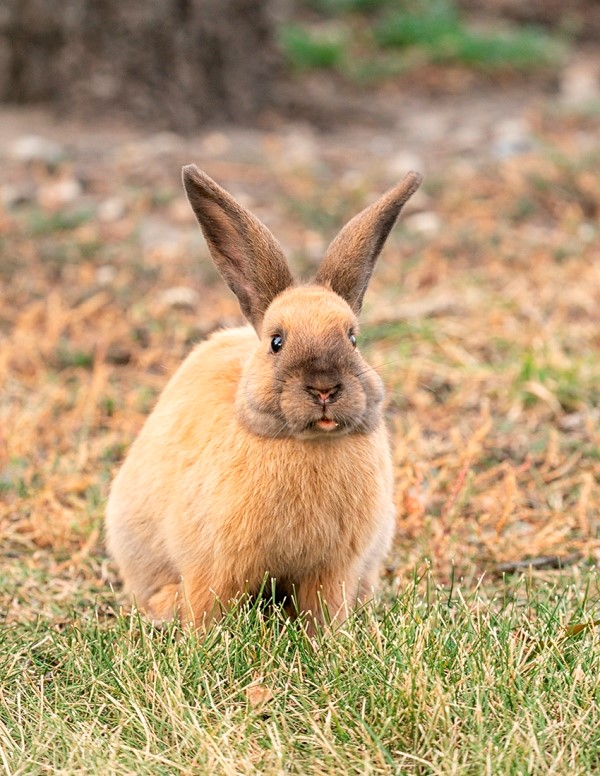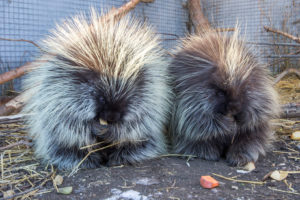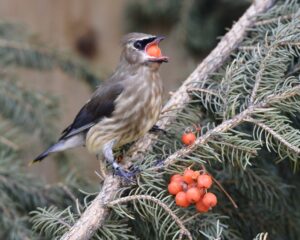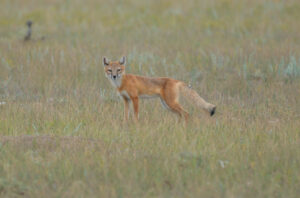Written by Maureen Perry
Long ago and far away…
Fifty-five million years ago in a land now called country of Mongolia, hiding under the protective boughs of a lush overgrown tree, crouches the oldest known ancestor of our modern day rabbits and hares. His name was Gomphos elkema.
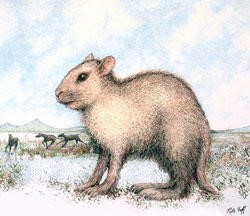
This little guy had a way of moving around very similar to its modern day descendants the rabbit and hare (also called Lagomorphs). His back legs were twice as long as his front legs, meaning he was likely hopping down the bunny trail just like his relatives do today! While today’s lagomorphs have specialized teeth, and short tails, Gomphos elkema boasted a medium sized tail, molar teeth for grinding, and a more robust square jaw.
Hares today
As we fast forward several million years and to the other side of our planet, we find ourselves in the province of Alberta, Canada. This area boasts three native lagomorph species: the mountain cottontail, the snowshoe hare and the white tailed jack rabbit. Despite the name, the mountain cottontail doesn’t actually live in the mountains – a classic case of mistaken identity that has stuck around over time. These three species have adapted well to having people around and are seen in cities, towns and farms throughout Alberta.
In Calgary it is common to see rabbits and hares any time of year. Are they rabbits? Are they hares? Let’s start with identifying who is who…
Telling hares and rabbits apart
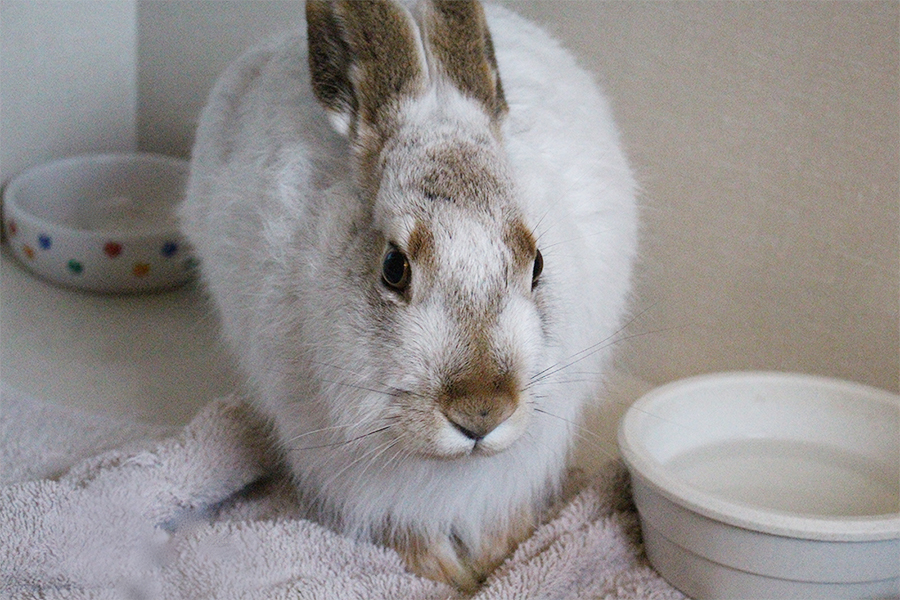
Babies: Rabbits are born without hair and are blind, whereas hares are born with fur, can see just fine, and are ready to start hopping around within hours of birth!
Size: Hares are larger than rabbits, with longer hind legs and longer ears.
Colour change: Rabbits do not change colour in the winter, but hares are brown in summer and change to white in winter.
Danger response: Rabbits often freeze then run when faced with danger, but hares will usually run and out maneuverer their attacker.
Social graces: Rabbits win in this category since they are often with other rabbits, but their cousins the hares only get together to mate or play. Rabbits cannot mate with hares of any kind. They are genetically incompatible.
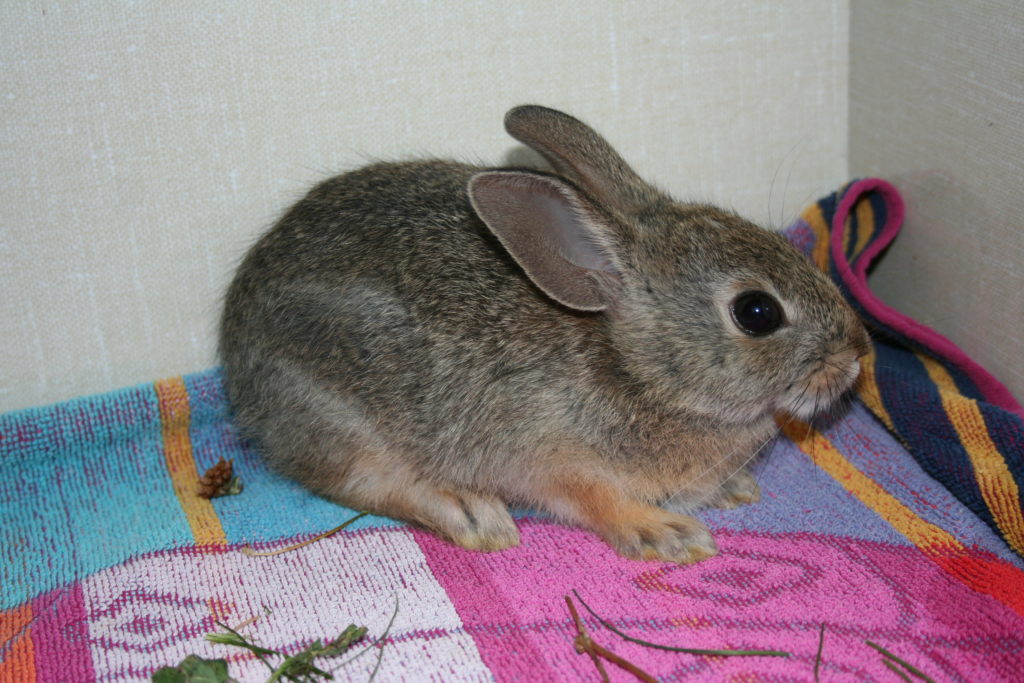
Feral Rabbits in Calgary
White tailed jack rabbits are Alberta’s largest hare and are found throughout the province, including in cities. The presence of bobcats in Calgary is a direct result of the abundance of jack rabbits. Luckily, jack rabbits can run up to fifty-five kilometres an hour and leap up to five metres to escape their feline foes!
So where on earth are the domestic rabbits in Calgary coming from??
Whether intentional or unintentional, domestic rabbits are often released in the wild. This is inhumane, unethical and can be ecologically destructive as well as a burden on taxpayers, city services and humane groups as it is an ongoing challenge controlling the rabbit population. Releasing a pet of any kind into the wild is also illegal and subject to a fine.
Even though rabbits normally live twelve to fifteen months in the wild, love is in the air with them (a lot!) resulting in three litters with up to six babies in each litter.
“Releasing” domestic animals is not a kindness
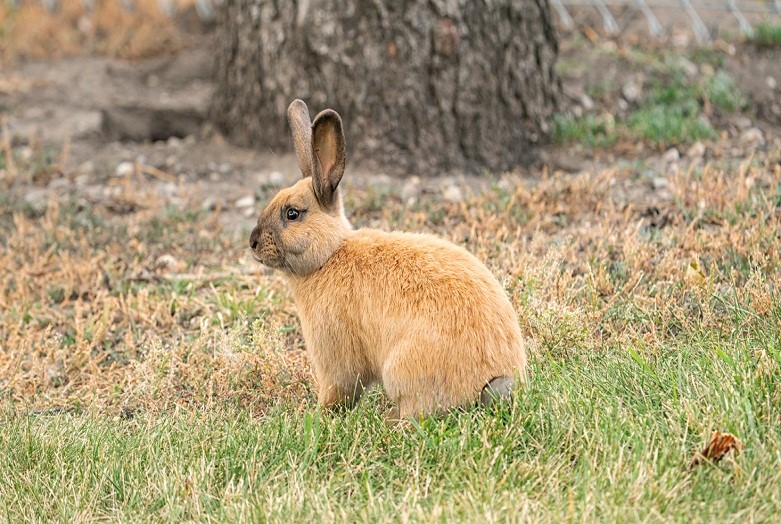
Hares are wild and have evolved survival skills over time. Domestic rabbits on the other hand have been in human care for centuries, and are at great risk of starvation, cold weather, vehicles and predators if left on their own.
Lack of education prior to acquiring a rabbit is one of the primary causes of abandonment. If you want to adopt a new rabbit, learn about caring for rabbits and what to expect from them beforehand. The saying “Prevention is worth a pound of cure” is most relevant in this situation!
It is time to do some critical thinking. Let’s either be excellent care givers to our rabbit friends or make the humane choice and not own them as pets at all if we are unsure if they are what we want.
Mahatma Gandhi said the words “You must be the change you want to see in the world”. Amen to that.
References:
American Museum of Natural History (AMNH). 2006. “Earliest Rabbit Fossil Found, Suggests Modern Mammal Group Emerged as Dinosaurs Faced Extinction”. https://www.amnh.org/research/science-news/2006/earliest-rabbit-fossil-found-suggests-modern-mammal-group-emerged-as-dinosaurs-faced-extinction#:~:text=The%2055%2Dmillion%2Dyear%2D,like%20way%20of%20moving%20around.
CBC News. 2018. “Rabbit versus hare: how to tell what you’re looking at”. https://www.cbc.ca/news/canada/calgary/alberta-rabbit-hare-differences-1.4659159
CTV Calgary. 2016. “Feral rabbits a concern in some Calgary neighbourhoods” https://calgary.ctvnews.ca/feral-rabbits-a-concern-in-some-calgary-neighbourhoods-1.2995200?cid=ps:localnewscampaign:searchad:ds:calgarycrawl
Earth Archives. “Dinosaurs of the Gobi Desert”. https://eartharchives.org/articles/dinosaurs-of-the-gobi-desert/index.html
Government of Alberta. 2021. “Human-wildlife conflict – Rabbits and hares”. https://www.alberta.ca/rabbits-and-hares.aspx
House Rabbit Society. http://rabbit.org/
Pyrman, Myrna. 2020. “Rabbits and Hares”. Nature Alberta. https://naturealberta.ca/rabbits-and-hares/

